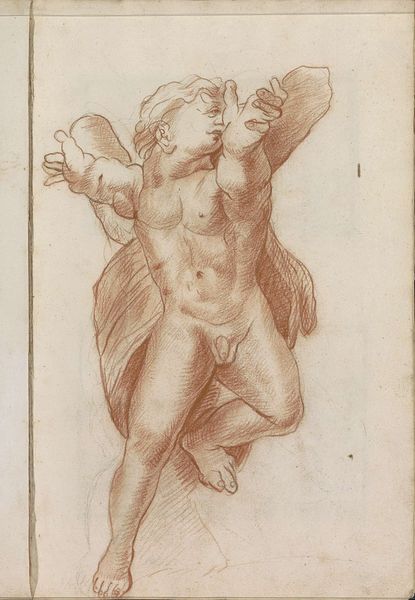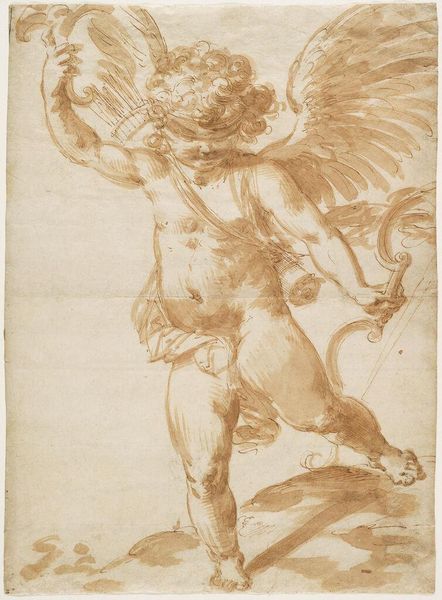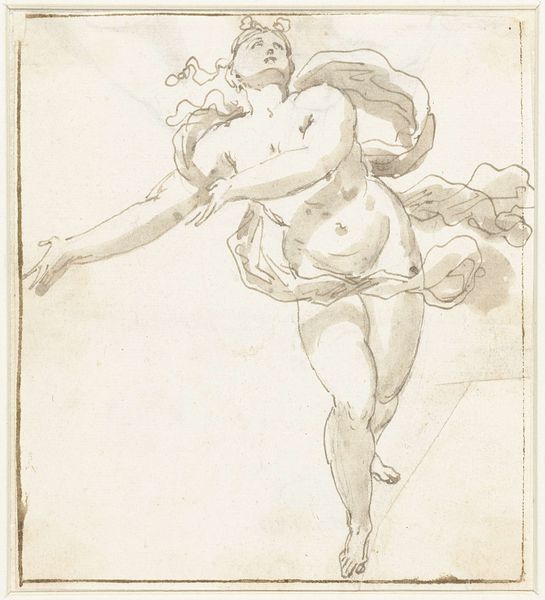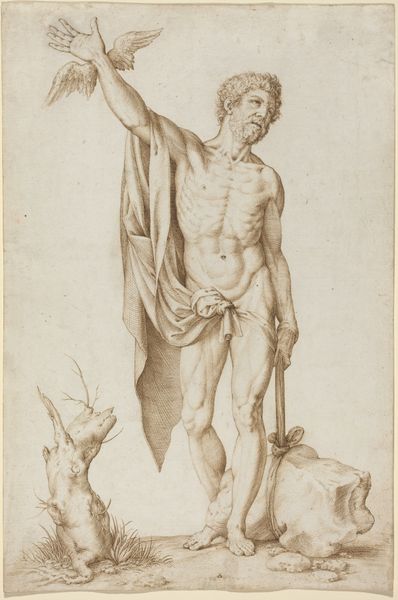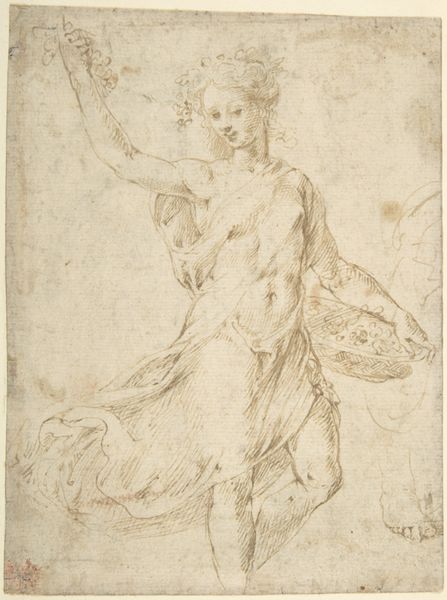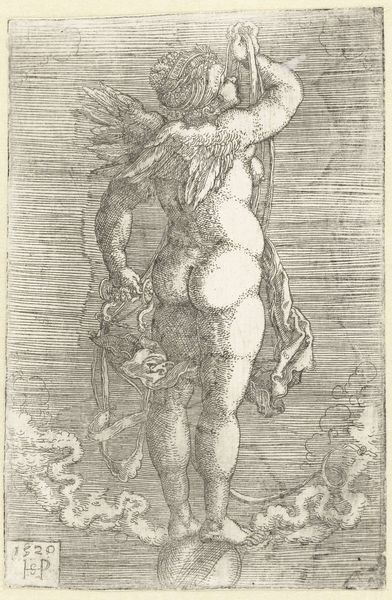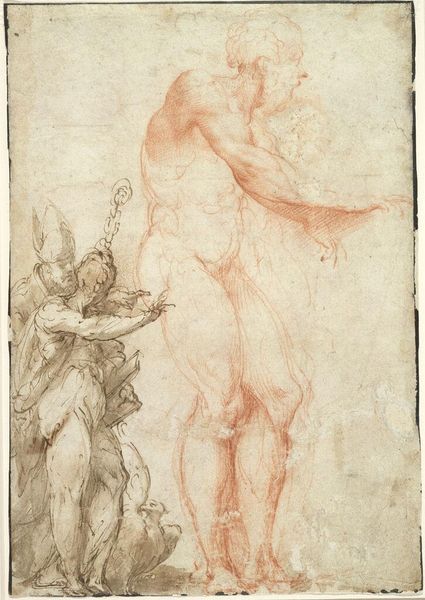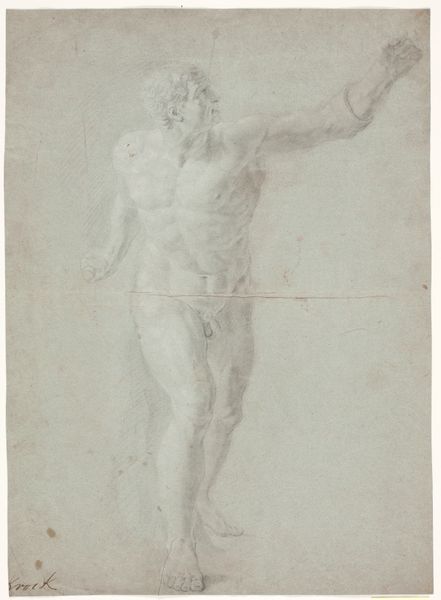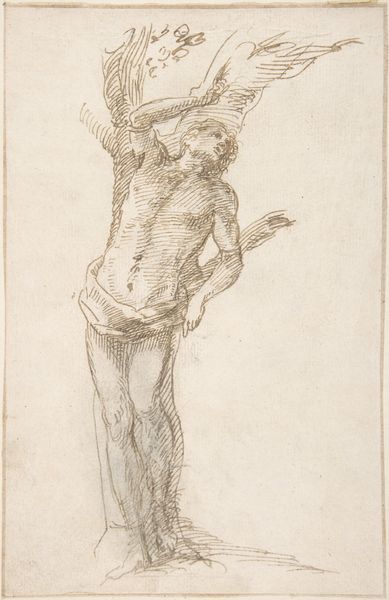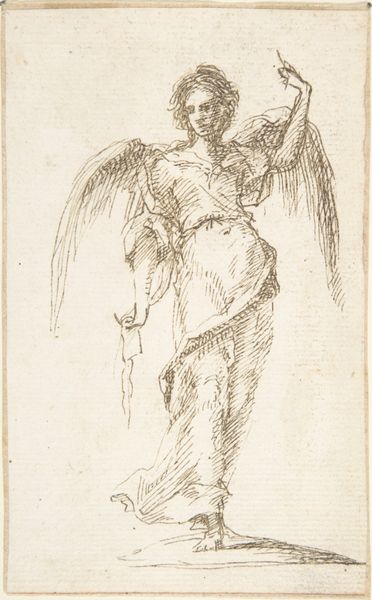
Dimensions: support: 184 x 146 mm
Copyright: CC-BY-NC-ND 4.0 DEED, Photo: Tate
Curator: The artwork before us is Joseph Highmore's "Study for Mercury," part of the Tate Collections. It's a drawing, roughly seven by five inches. Editor: Immediately, I see a figure in motion, captured in these fluid lines. The winged helmet, the cloud-like formations... it’s as if he is about to take flight right off the page. Curator: Highmore, who lived from 1692 to 1780, was clearly fascinated by classical mythology. Mercury, or Hermes, the messenger god...he's a symbol of commerce, communication, agility, right? Editor: Yes, and those attributes are deeply rooted in Mercury's winged sandals and caduceus. It’s interesting how Highmore focuses on the figure’s strength rather than those more obvious emblems of speed. Curator: It almost feels like Highmore is exploring Mercury's inherent energy, that spark of divine will before it manifests in action. He’s really stripped away all but the essential character. It is a wonderful exercise in visual economy. Editor: Absolutely. A study indeed—a glimpse into the artist's thought process of the past that makes me think about the swiftness and energy still needed today.
